Severe drought conditions have left the west starving for water. Reservoirs are dwindling down and the Colorado River is drying up before it can reach the Pacific Ocean. The area has tried to limit their water usage despite increased populations, but mother nature hasn't been too cooperative. Until she sent El Niño.
El Niño is classified by warmer than average surface waters in the Pacific ocean that cause warmer and drier than average temperatures over the western and northern United States with cooler and wetter than average conditions in the Southwest.
Currently, the warmer than average equatorial surface waters in the Pacific are moving further north, resulting in the strongest El Niño ever, surpassing the event in 1997 that dropped record amounts of snow in California and the Southwest.
 This is great news for those along the Colorado River basin that are depending on a wet winter to bring life back to their crops, reduce drought conditions, and replenish
their reservoirs.
This is great news for those along the Colorado River basin that are depending on a wet winter to bring life back to their crops, reduce drought conditions, and replenish
their reservoirs.
The Colorado River basin receives the bulk of it's moisture in the form of summer monsoons and winter storms. These winter frontal systems, which are increased through El Niño, are what meteorologists are hoping will bring relief to the Colorado River basin.
"Winter and spring frontal systems originating in the North Pacific Ocean, provide the largest and most important source of moisture. These large-scale systems tend to carry moisture at higher levels in the atmosphere, with orographic effects of the mountainous West causing an increase in precipitation with elevation," according to the U.S. Geological Survey. "Cold frontal systems produce substantial amounts of snow above about 5,000 feet and rainfall at lower elevations in the Rocky, Uinta, and Wind River Mountains, which constitute the headwaters of the Colorado River and its principal tributary,the Green River. These storms build snowpacks that melt in the late spring, providing runoff to the Colorado River."
The increase in runoff will hopefully increase the flows of the Colorado, which are currently at some of the lowest recorded. But, unfortunately, with such dry surface conditions from consecutive drought years, the likelihood of flooding during the runoff is increased.
It's tough to predict the actual effects El Niño will bring, however meteoroligists are relying on previous El Niño events that have brought plenty of moisture to the Southwest, including the Colorado River basin.
What will occur throughout the state of Colorado remains to be seen with the unpredictable weather pattern.

Meteorologists are expecting Colorado's winter numbers to look close to average. However, according to the National Center for Atmospheric Research, 20-inch snowstorms are almost seven times as likely to occur during El Niño years. These snowstorms tend to happen in spring and fall while the mid-winter months drier than normal
Because Colorado is between the polar jet stream, causing warmer temperatures up north, and the subtropical jet stream, causing cooler temperatures in the south, it's tough to determine if Colorado will see any major changes.
According to UCAR (University Corporation for Atmospheric Research), the chances of having a wetter than average winter is roughly the same as having a dryer than average winter. "A single big storm surrounded by dry spells could leave a two- or three-month period close to or even below average, obscuring the impact of that one big storm."








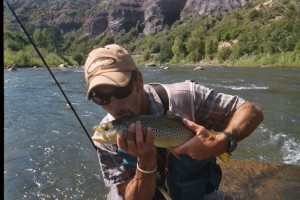






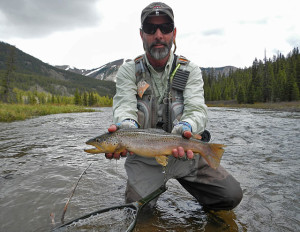 out of water will definitively kill the fish. There are tricks to minimizing air exposure and handling while still getting photo proof of your catch.
out of water will definitively kill the fish. There are tricks to minimizing air exposure and handling while still getting photo proof of your catch.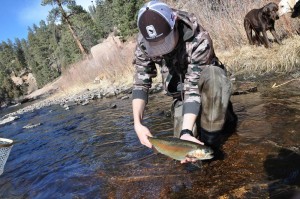 it doesn't need to leave the water). Even when the handling time is minimal, fish still need be released properly as well. When fish have experienced considerable physiological stress due to exercise and handling, they can lose their equilibrium, coordinated movements of their fins and roll or nosedive- resulting in death further on downstream.
it doesn't need to leave the water). Even when the handling time is minimal, fish still need be released properly as well. When fish have experienced considerable physiological stress due to exercise and handling, they can lose their equilibrium, coordinated movements of their fins and roll or nosedive- resulting in death further on downstream.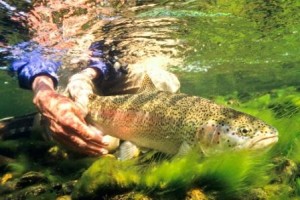 when helping it recover, do not move a fish back and forth—recall that water moving backwards over the gills does not help, but in fact, can actually harm the fish," says Dr. Danylchuck. "Let the fish go when its fins are showing coordinated movements, it can keep itself upright and it is actively trying to swim away from you."
when helping it recover, do not move a fish back and forth—recall that water moving backwards over the gills does not help, but in fact, can actually harm the fish," says Dr. Danylchuck. "Let the fish go when its fins are showing coordinated movements, it can keep itself upright and it is actively trying to swim away from you."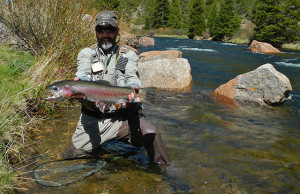 protect the resource. I was getting back into fly fishing in a big way while living in northern VA in the 90's. I became very involved at the state level in Virginia and helped with web development efforts and other projects for the VA Council of TU. In 2006, I moved to the Colorado Rockies for the mountains, rivers, and trout. I am an active member of our Gunnison Chapter of TU, the Gunnison Angling Society. I served on the Board, and was also VP and President. I built a new website for the chapter and continue to manage that, as well as chapter communications.
- What made you want to become more involved with TU?
protect the resource. I was getting back into fly fishing in a big way while living in northern VA in the 90's. I became very involved at the state level in Virginia and helped with web development efforts and other projects for the VA Council of TU. In 2006, I moved to the Colorado Rockies for the mountains, rivers, and trout. I am an active member of our Gunnison Chapter of TU, the Gunnison Angling Society. I served on the Board, and was also VP and President. I built a new website for the chapter and continue to manage that, as well as chapter communications.
- What made you want to become more involved with TU?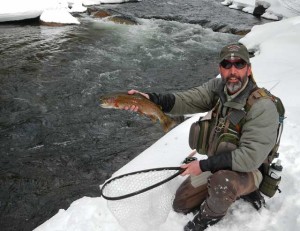
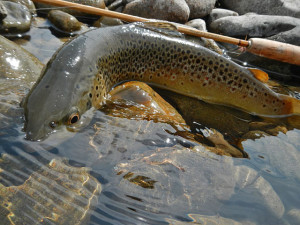 - To you, what is the best tactic or fly for catching trout?
The most important thing is patience.
That is the key word for fishing and definitely for guiding as well. You need to move slow, concentrate, and have a lot of patience and just
enjoy the ride. It’s not brain surgery. We’re just catching fish. I definitely don’t have just one top fly that I use. I enjoy dry fly fishing the most, and when I can’t do that, I love to streamer fish. So chasing big trout with a streamer is one of my favorite things to do. And for that, I like a size 4 Sculpzilla.
- To you, what is the best tactic or fly for catching trout?
The most important thing is patience.
That is the key word for fishing and definitely for guiding as well. You need to move slow, concentrate, and have a lot of patience and just
enjoy the ride. It’s not brain surgery. We’re just catching fish. I definitely don’t have just one top fly that I use. I enjoy dry fly fishing the most, and when I can’t do that, I love to streamer fish. So chasing big trout with a streamer is one of my favorite things to do. And for that, I like a size 4 Sculpzilla.









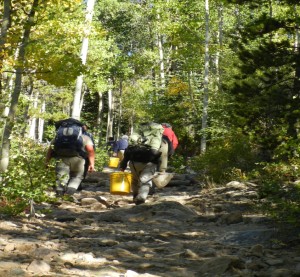




 experiences to better implant them in my brain.”
experiences to better implant them in my brain.”
